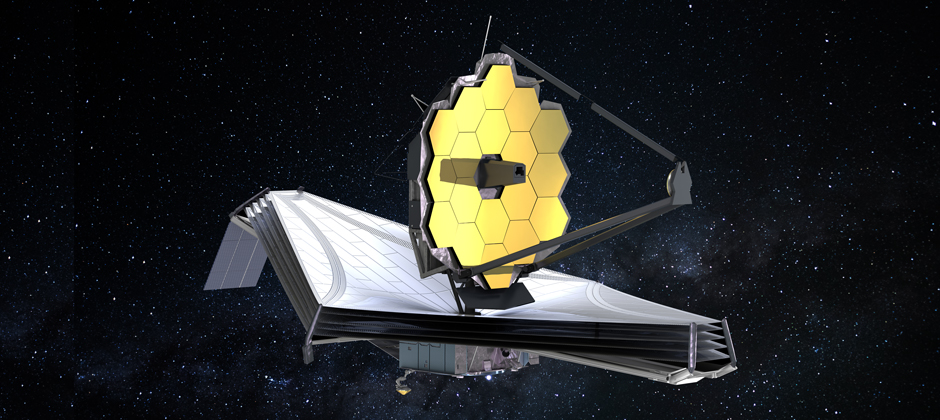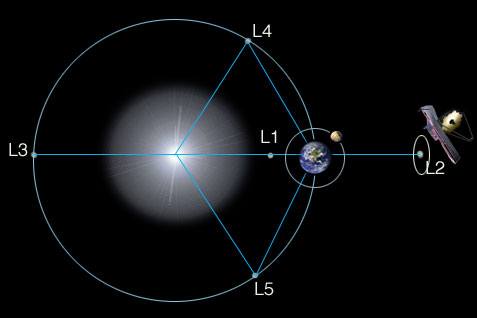James Webb Space Telescope
About JWST
- In 2021, NASA launched its James Webb Space Telescope (JWST), opening a new era of astronomy.
- The telescope is an international collaboration led by NASA in partnership with the European and Canadian space agencies.
- Webb, the world’s premier space science observatory, will succeed the Hubble Space Telescope, NASA’s flagship telescope that has been in service for more than three decades now.
Mission’s Objective
- The science goals for the Webb can be grouped into four themes. The first is to look back around 13.5 billion years to see the first stars and galaxies forming out of the darkness of the early universe. Second, to compare the faintest, earliest galaxies to today’s grand spirals and understand how galaxies assemble over billions of years.
- Third, to see where stars and planetary systems are being born. And fourth, to observe the atmospheres of extrasolar planets (beyond our solar system), and perhaps find the building blocks of life elsewhere in the universe. The telescope will also study objects within our own Solar System.

Orbit
-
- Hubble orbits the Earth at an altitude of ~570 km. Webb does not orbit the Earth, instead it sits at the Earth-Sun L2 Lagrange point, 1.5 million km away.
- This means that Webb orbits the Sun along with the Earth, but will stay fixed at the same spot in relation to the Earth and the Sun.
- Lagrange points are positions in space where objects sent there tend to stay put. At Lagrange points, the gravitational pull of two large masses precisely equals the centripetal force required for a small object to move with them. These points in space can be used by spacecraft to reduce fuel consumption needed to remain in position. There are five such points in the Sun-Earth system and they are denoted as L1, L2, L3, L4 and L5.
- Objects placed at these positions are relatively stable and require minimal external energy to keep themselves there. L2 is a position directly behind Earth in the line joining the Sun and the Earth.

- At the L2 point, Webb’s solar shield will block the light from the Sun, Earth, and Moon, which will help it stay cool — important for an infrared telescope.
Significance
- NASA says Webb is not Hubble’s replacement — rather, its successor whose science goals were motivated by the results from Hubble.
- Powerful space telescopes, like JWST or the Hubble Telescope, are often called time-machines because of their ability to view very faraway objects. The light coming from those objects, stars or galaxies, which is captured by these telescopes, began its journey millions of years earlier.
- Essentially, what these telescopes see are images of these stars or galaxies as they were millions of years ago. The more distant the planet or star, the farther back in time are the telescopes able to see.
- Webb is about 100 times more sensitive than Hubble and is expected to transform scientists’ understanding of the universe and our place in it.
- JWST is much more powerful and has the ability to look in the infrared spectrum, which will allow it to peer through much deeper into the universe, and see through obstructions such as gas clouds.
- As electromagnetic waves travel for long distances, they lose energy, resulting in an increase in their wavelength. An ultraviolet wave, for example, can slowly move into the visible light spectrum and the infrared spectrum, and further weaken to microwaves or radio waves, as it loses energy.
- Hubble was designed to look mainly into the ultraviolet and visible regions of the electromagnetic spectrum. JWST is primarily an infrared telescope, allowing it to gaze through clouds of gas and dust where stars are being born, the first of its kind.
- Webb’s mirror is much larger than Hubble’s; it can, therefore, look farther back into time than Hubble. Webb’s primary mirror is approximately 6.5 metres in diameter compared to Hubble’s mirror has a diameter of 2.4 metres, which means Webb’s collecting area is around 6.25 times that of Hubble’s.
Why in News?
- It was in news recently.
Subscribe
Login
0 Comments
